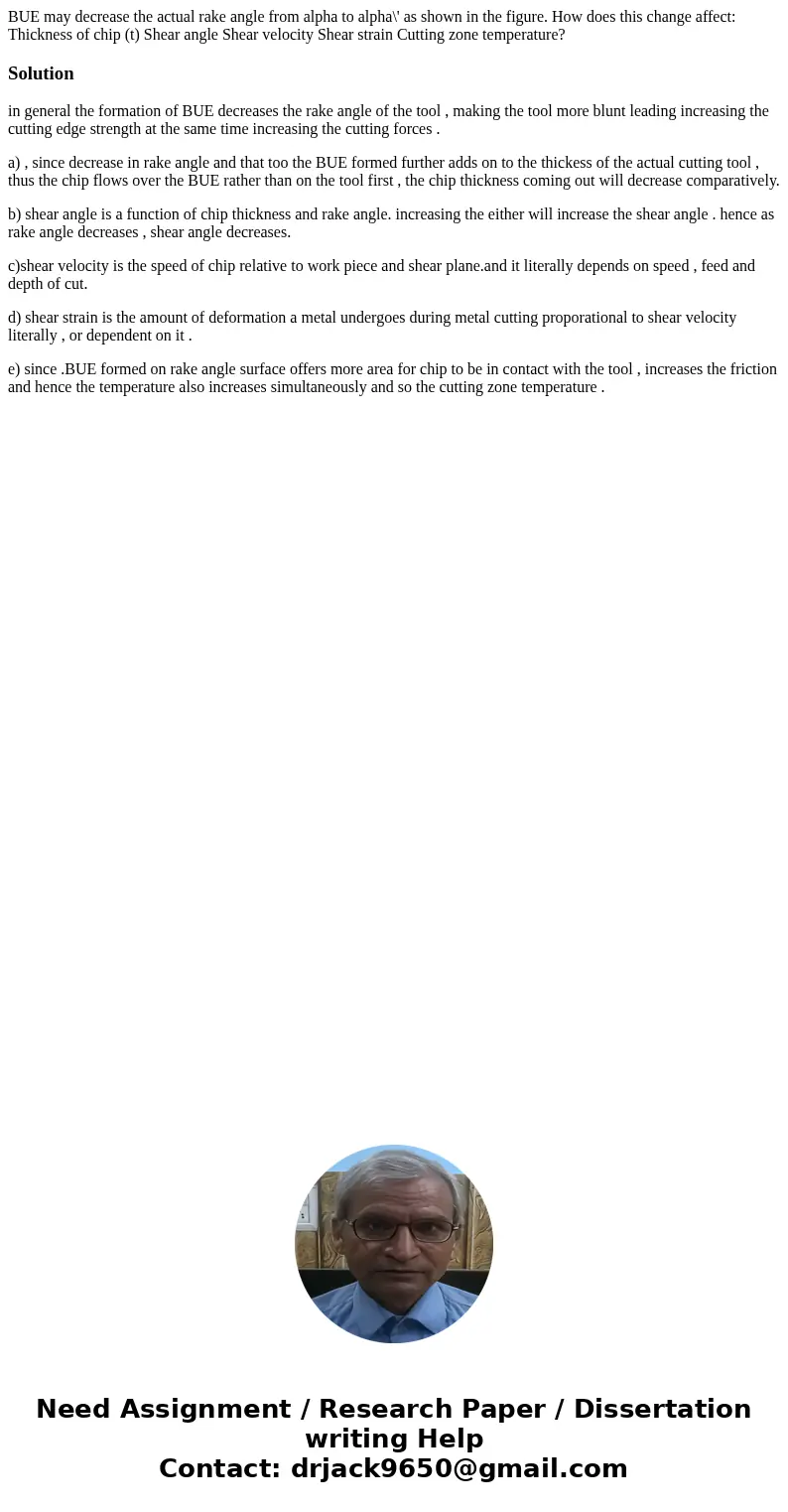BUE may decrease the actual rake angle from alpha to alpha a
Solution
in general the formation of BUE decreases the rake angle of the tool , making the tool more blunt leading increasing the cutting edge strength at the same time increasing the cutting forces .
a) , since decrease in rake angle and that too the BUE formed further adds on to the thickess of the actual cutting tool , thus the chip flows over the BUE rather than on the tool first , the chip thickness coming out will decrease comparatively.
b) shear angle is a function of chip thickness and rake angle. increasing the either will increase the shear angle . hence as rake angle decreases , shear angle decreases.
c)shear velocity is the speed of chip relative to work piece and shear plane.and it literally depends on speed , feed and depth of cut.
d) shear strain is the amount of deformation a metal undergoes during metal cutting proporational to shear velocity literally , or dependent on it .
e) since .BUE formed on rake angle surface offers more area for chip to be in contact with the tool , increases the friction and hence the temperature also increases simultaneously and so the cutting zone temperature .

 Homework Sourse
Homework Sourse